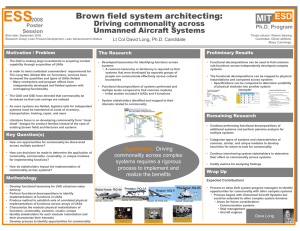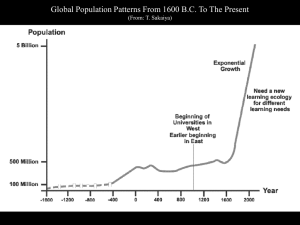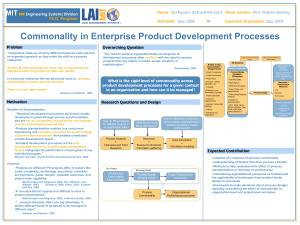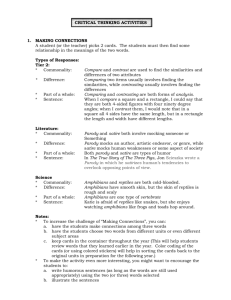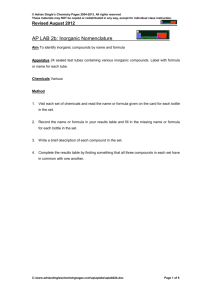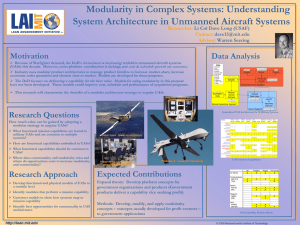MIT ESD Finding opportunities for commonality across complex systems:
advertisement
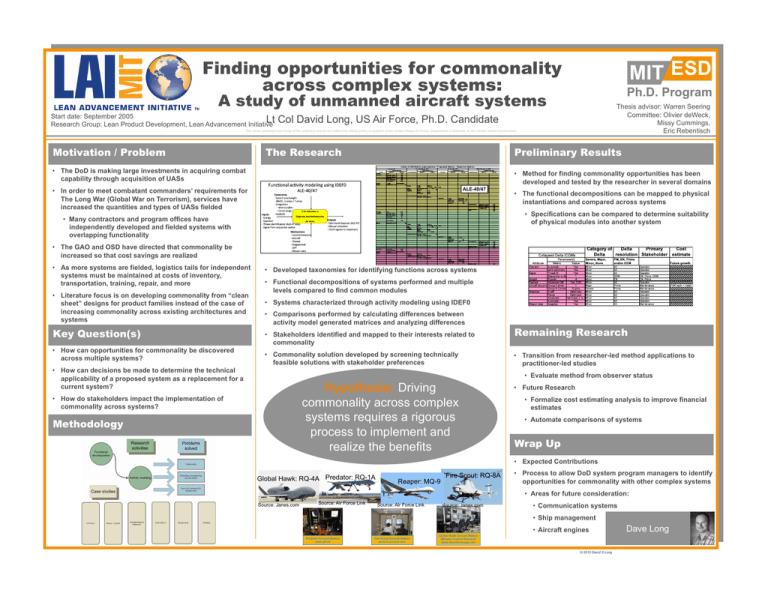
Finding opportunities for commonality across complex systems: MIT ESD Ph.D. Program A study of unmanned aircraft systems Start date: September 2005 Lt Research Group: Lean Product Development, Lean Advancement Initiative Thesis advisor: Warren Seering Committee: Olivier deWeck, Missy Cummings, Eric Rebentisch Col David Long, US Air Force, Ph.D. Candidate The views presented are those of the author(s) and do not reflect the official policy or position of the United States Air Force, Department of Defense, or the United States Government. Motivation / Problem Preliminary Results The Research • The DoD is making large investments in acquiring combat capability through acquisition of UASs • Method for finding commonality opportunities has been developed and tested by the researcher in several domains ALE-40/47 • In order to meet combatant commanders’ requirements for The Long War (Global War on Terrorism), services have increased the quantities and types of UASs fielded • The functional decompositions can be mapped to physical instantiations and compared across systems • Specifications can be compared to determine suitability of physical modules into another system • Many contractors and program offices have independently developed and fielded systems with overlapping functionality • The GAO and OSD have directed that commonality be increased so that cost savings are realized • As more systems are fielded, logistics tails for independent systems must be maintained at costs of inventory, transportation, training, repair, and more • Literature focus is on developing commonality from “clean sheet” designs for product families instead of the case of increasing commonality across existing architectures and systems Key Question(s) • How can opportunities for commonality be discovered across multiple systems? • Developed taxonomies for identifying functions across systems • Functional decompositions of systems performed and multiple levels compared to find common modules • Systems characterized through activity modeling using IDEF0 • Comparisons performed by calculating differences between activity model generated matrices and analyzing differences • Stakeholders identified and mapped to their interests related to commonality • Commonality solution developed by screening technically feasible solutions with stakeholder preferences • How can decisions be made to determine the technical applicability of a proposed system as a replacement for a current system? Remaining Research • Transition from researcher-led method applications to practitioner-led studies • Evaluate method from observer status Hypothesis: Driving commonality across complex systems requires a rigorous process to implement and realize the benefits • How do stakeholders impact the implementation of commonality across systems? Methodology • Future Research • Formalize cost estimating analysis to improve financial estimates • Automate comparisons of systems Wrap Up • Expected Contributions Global Hawk: RQ-4A Predator: RQ-1A Reaper: MQ-9 Fire Scout: RQ-8A • Process to allow DoD system program managers to identify opportunities for commonality with other complex systems • Areas for future consideration: Source: Janes.com Source: Air Force Link Source: Air Force Link Source: Janes.com • Communication systems • Ship management • Aircraft engines Predator Ground Station www.af.mil Fire Scout Ground Station www.irconnect.com Global Hawk Ground Station (Mission Control Element) www.directionsmag.com © 2010 David S Long Dave Long
